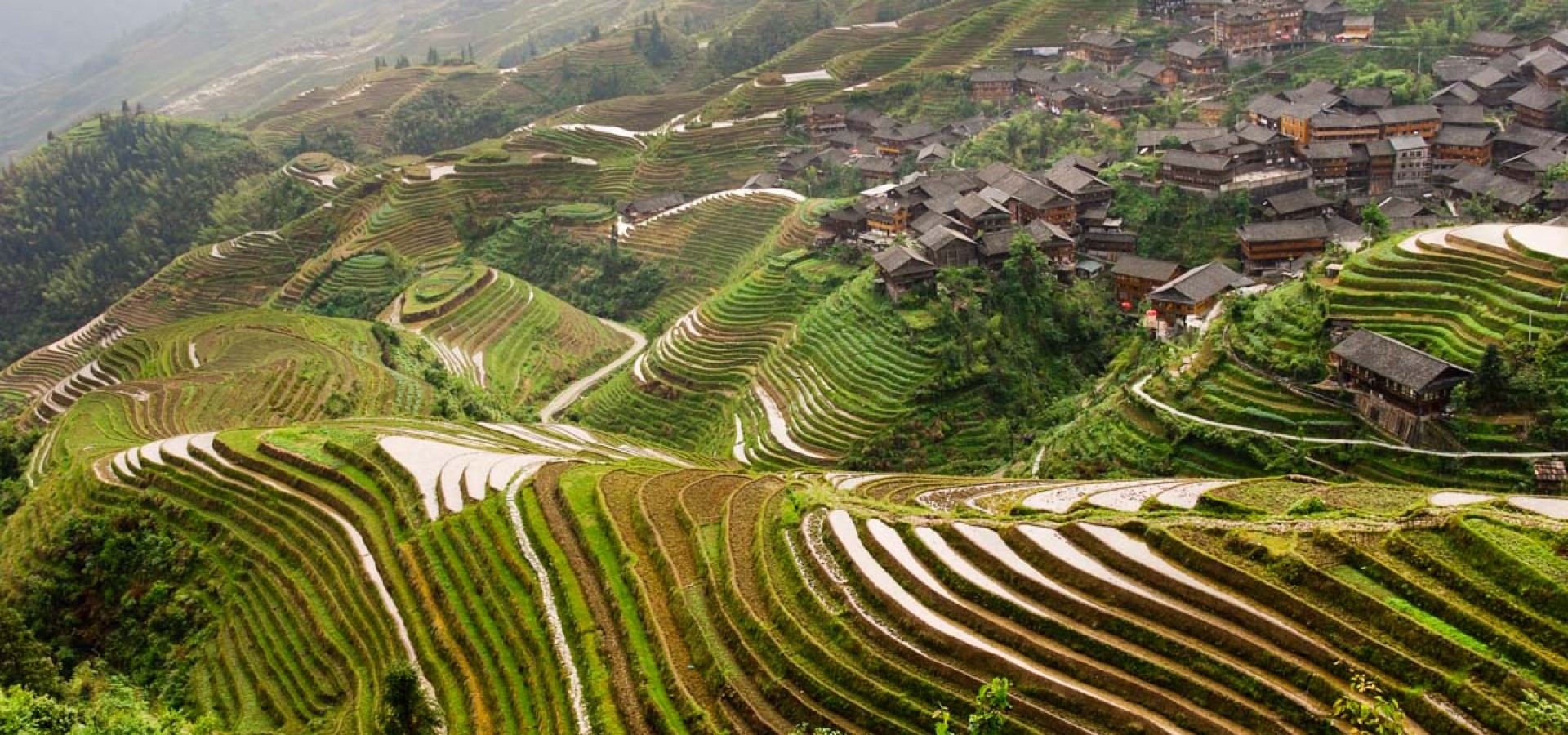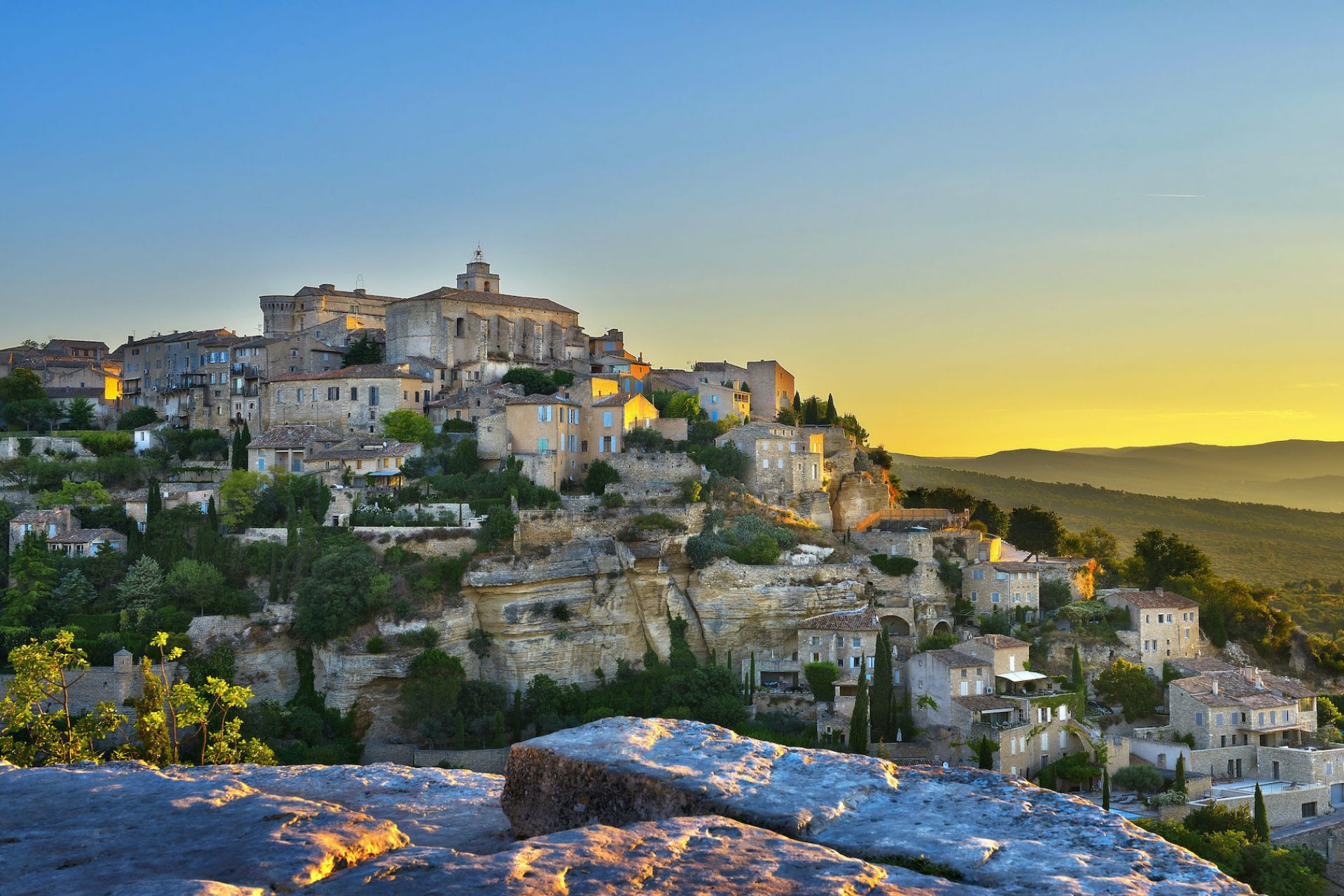What makes this area a prime tourist location is the amazing rock formations that are especially spectacular to watch from the Li or Yulong River. They are best described as a never ending cascade of pointed hills covered with lush green vegetation, often coming in bizarre shapes given names like Moon Hill, Nine Horse Fresco Hill… One range follows the other, the ones further away mysteriously disappearing in the haze, typical for this area near two rivers. It reminded me a lot of Halong Bay in Vietnam, without the ocean of course and more, slimmer hills!
Cycling along the Yulong River
One of the best ways to see the extraordinary scenery is riding a bike along the Yulong River. Here tourism is presently finding its way into the local farming communities along the river. This area is undergoing a major transition: you see farmers working their rice paddies or taking their animals home in the evening, while others are building bamboo rafts or taking tourists down the river on these floating devices.
Cruising the Li River
Another possibility to see the stunning rock formation close up is taking a boat trip along the Li River. There are many options, a full-day trip from Guilin to Yangshuo in a big tour boat, or covering only the most scenic stretch in a bamboo raft equipped with a little engine.
Rice terraces of Ping’An – Avoid long weekends…
We were well aware that visiting a main tourist attraction in China during the May 1st holiday week would not be a lonely affair! Nevertheless, what we experienced in the tiny village of Ping’An was beyond our wildest imaginations. The area is famous for its extensive and elaborately sculptured rice terraces, a truly magnificent place. BUT! Since it caters mainly to Chinese tour groups coming up for the day from Guilin or Yangshuo, the place turns into a zoo during the busy holiday season.
Not that Ping’An is a village just off a major highway: it requires quite some traveling to get there, all in all at least 3 hours from Guilin for instance. The last bit is a steep, narrow, windy road that ends at the path that leads to the village. For 50 Yuan, you may pass the entrance gate. From there, it is another 15 to 20 minute walk uphill to the village proper. Unfortunately, in this place, the word mass tourism took on a dimension we did not think was possible. We tried to focus on the positive side and see it as an attraction of its own.
Minority villages near Sanjiang
After the madness of Ping’An, it was such a relief to find Ma’an, famous for its Chengyang Wind and Rain Bridge, a quiet relaxed place. The about 100 year old bridge was built by the villagers only using wood, no nails and is covered by what looks like a cascade of roofs. The rice paddies next to the river are irrigated by large squeaking waterwheels.
Unfortunately it rained a lot when I was there, which strongly hampered my hiking plans. Nevertheless, I managed to do a four hour walk around the neighboring Dong minority villages. These are famous for their drum towers, which are basically assembly halls or places to meet socially.
In the village of Pingtan Zhai, I was offered to come inside the Drum Tower, where a group of elderly men was playing cards. Some were watching a hilarious TV program, a man and a woman were competing screaming “Miau” in high-pitched voices. When I was ushered in by one of the men, the others gave me big welcoming smiles and then went on with their business. Tea was offered and of course some smoke, both pipe and cigarettes.
For more information about travelling through South and Southwest China please visit my website http://grandescapades.net/travel-guide-to-china




